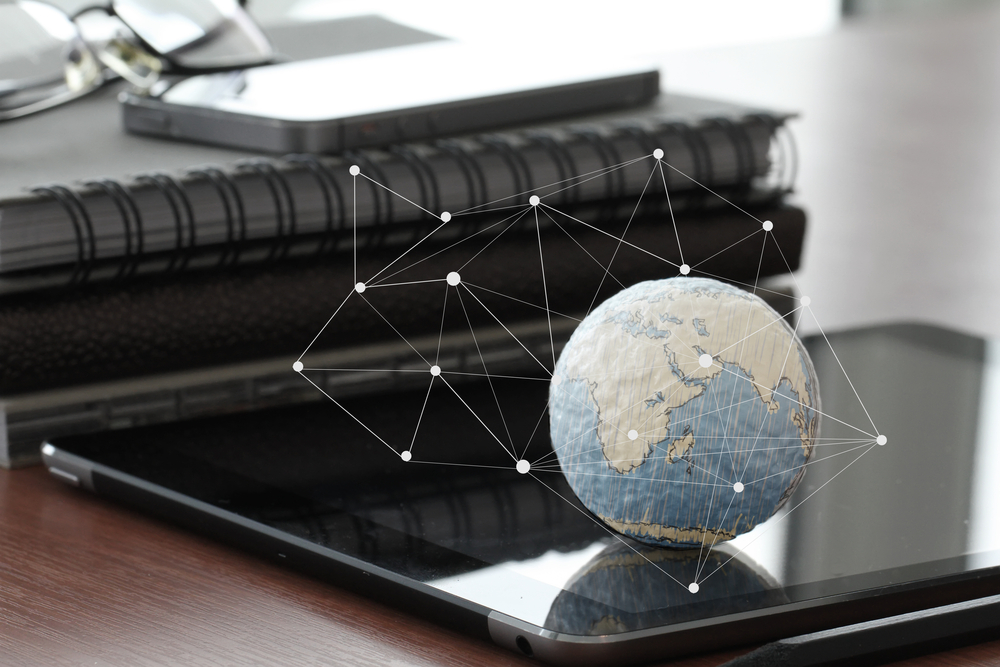4 min read
What is the Internet of Things and Why Does It Matter to Your Security?
By: SCI Marketing on Jun 7, 2022 9:14:23 AM

Learn how your security measures interact with devices on the internet.
Whether or not you’re familiar with the terminology, you’ve been interacting with the Internet of Things for decades. Learn how the internet of things impacts your physical security and what steps you can take to best protect your building, staff, assets, and clients.
What is the Internet of Things?
The Internet of Things, also referred to as IoT, is a system or network of connected devices. The term covers an extremely broad umbrella because nowadays, objects of all kinds are connected to the internet, thus making them the “things” included in IoT. These can range from the obvious smartphones and computers to items like cars, kitchen appliances, thermostats, barcode scanners, and more. If it can transfer data or connect to a network, it belongs to the IoT.
This level of connectivity between devices of all types makes our lives easier and enhances our control over aspects like the temperature in our homes or the accuracy of a shipment. With technology like cloud computing and storage, AI, and analytics growing constantly more common, the interconnectivity between devices does as well.
However, for all the convenience and accessibility offered by the broad and ever-growing IoT, there is also a trade-off in the form of security risk. Hackers and scammers can much more easily gain access to devices and data connected to the IoT than they could a physical space. Because IoT items are often portable, can sometimes be accessed remotely, and can be compromised in a variety of ways, connectivity to IoT comes with the necessity for increased security measures and awareness.
How Does the Internet of Things Impact Physical Security?
At first glance, it may appear that the IoT is solely a cybersecurity issue and not something to consider when it comes to physical security. However, the vast majority of physical security systems and technologies do belong to the IoT. Therefore, converging physical and cybersecurity strategies is crucial for creating a truly secure environment.
Hosted solutions are gaining popularity in physical security. In order to take advantage of more affordable storage, easier video streaming and access control protocols, and a vast array of additional services, organizations of all sizes are transitioning to video security and access control protocols that rely on the cloud. This means that without proper security considerations, these systems can be left vulnerable to hacking and other breaches.
This is not to say that hosted solutions pose the latest or the only vulnerability when it comes to IoT and physical security. Even simple devices like thermostats, if connected to the internet, can become targets to those with bad intentions and allow them to gain access to other systems on the same network.
In addition, pharmaceutical companies and manufacturing groups rely heavily on network-connected devices for proper coding and labeling of crucial medications and equipment. Any change to a device as seemingly inconsequential as a scanner can do worlds of damage.
Security Best Practices for IoT Devices
Because of the potential for added vulnerabilities, it may be easy to wonder if it’s better to stick with simpler devices that don’t connect to a network at all. However, such a drastic measure is both impractical and unnecessary. With the appropriate procedures and security protocols, it’s entirely possible to maintain proper security while also reaping the benefits of modern technology and connectivity. Here are a few best practices to start with.
- Diversify networks when possible: If all of your devices and databases operate on the same network, then that network has multiple points of access and therefore increased vulnerability to a breach. In addition, should a breach occur, having everything on one network means everything is then exposed to the same risk. Keeping separate networks for separate purposes can help protect your data and your physical spaces.
- Keep software up to date: Even devices as seemingly meaningless as your office coffee machine should be kept up to date with the latest software and patches to ensure tightest security possible.
- Utilize multi-factor authentication: Instead of relying on a singular password or a simple keycard to keep your spaces secure, implement multi-factor authentication for both physical and digital access points. This simple measure has been shown to drastically strengthen security.
- Only use trusted devices: Partner with integrators and suppliers with strong reputations in order to avoid relying on devices with unnecessary security vulnerabilities or misconfiguration.
- Work to understand and monitor IoT devices: The more familiar your security and technology teams can become with the way your devices and networks operate at baseline, the better-equipped you’ll be to identify and remedy issues and breaches as quickly as possible.
Strong physical and cybersecurity don’t happen by accident. To ensure the safety of your staff, clients, and assets, work with a trusted and experienced security integrator. If you’re ready to strengthen your IoT and overall security, get in touch today!
Related Posts
Working With a Security Integrator: What You Need To Know
Working with a security integrator to install a security system is the best way to protect your...
The Role of AI in Proactive Video Monitoring
With every recent conference and summit, one reality is becoming clear: when it comes to video...
A Look Ahead: What's Coming in the Security World in 2023?
Here are four big changes on the horizon this year in the security industry.
While 2022 brought...
